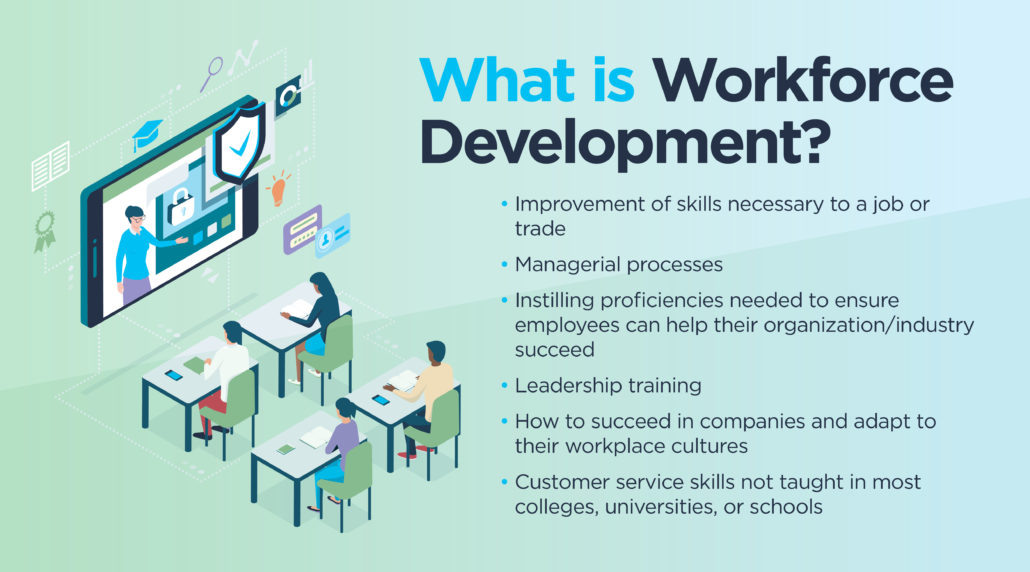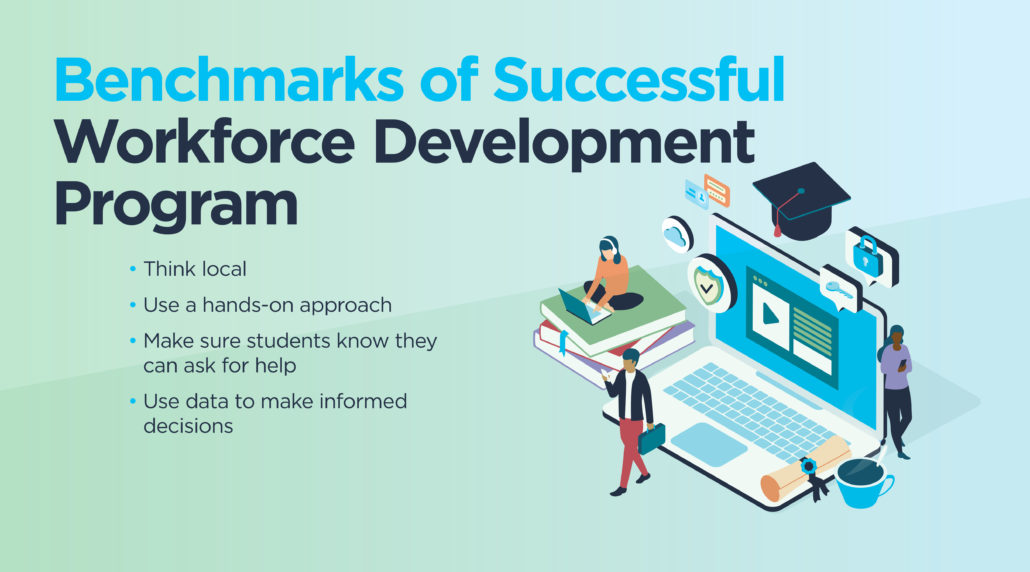Many industries have had to pivot to remote or online learning methods over the past year, and they may stay that way. The convenience of being able to work from almost anywhere, savings on office space rental, and ease of online education are all positive factors. However, though online education models have existed for years in some educational institutions, robust workforce development programs are still lagging.
All industries stand to benefit from improved methodologies, but not every employer or college works to improve existing online learning tools and methods. Why is this the case? According to Inside Higher Ed:
- Netflix, Apple, and Google will no longer weed out job candidates without a degree
- 25% of people in the US feel their degree is relevant to their current careers
- Only one-third of college graduates obtained job offers after college between 2002 and 2016
- Fewer than 25% of employers believe college graduates are ready to start working once they’ve received a degree
That is why it is crucial for colleges and universities to use every possible avenue to ensure their graduates learn the soft and hard skills necessary for the workforce. First, let’s analyze what workforce development is and how to strategize successful programs.
What is Workforce Development?
Workforce development refers to several teachings:
- Improvement of skills necessary to a job or trade
- Managerial processes
- Instilling proficiencies needed to ensure employees can help their organization/industry succeed
- Leadership training
- How to succeed in companies and adapt to their workplace cultures
- Customer service skills not taught in most colleges, universities, or schools
Workforce development is much more in-depth than job training, which offers only specific tools necessary to do the job a person was hired for. It can also be customized according to one’s industry, company culture, and organization.

Benchmarks of Successful Workforce Development Program
There is no one size fits all approach to this, but here are some ways to make sure your programs succeed.
Think local.
It is important to teach people the skills needed to serve and be productive in their communities instead of focusing on outdated concepts or technologies. Evaluate your locality and find ways to customize your workforce development concepts.
Use a hands-on approach.
Many university and college graduates fail to secure work in their chosen field because they only learn theories and don’t put concepts into practice. Workforce development programs allow people to learn actively, solving real problems as they study their curriculum.
Make sure students know they can ask for help.
Often called “wrap-around student services,” successful workforce programs know that people must motivate themselves, but they still work to ensure students can work through any barriers they stand in their way.
Depending on your mission, your student services may include providing information about financial aid, scholarships, tutoring, mental health counseling, remedial classes for people who need to learn at a slower pace, assistance finding low-cost transportation to and from sessions, and information about how to access affordable childcare. This is not coddling students, it is teaching them that asking for help isn’t a bad thing, and making sure that tools exist to help them complete their programs.
Use data to make informed decisions.
The U.S. Department of Labor is a great resource for people who want to learn which jobs are seeking projected growth and which ones are becoming outdated. Likewise, there are other data sources that will help you decide which workforce development programs to keep, change, or toss.
Cybersecurity Bootcamps: A Real-World Example
Cybersecurity is a growing field that is seeing a projected employee shortage. Bootcamps in this industry can help people find jobs in this field, create new opportunities, and ensure that there are enough qualified employees who can work in this important industry.
A cybersecurity bootcamp is ideal because of its affordability, shorter time commitment, and because programs like the Cybint Cybersecurity Bootcamp help learners work right away. In other words, bootcamps are quick, understand the needs of students who cannot commit to a four-year degree and need flexibility, and provide a quick return on your investment.

Workforce Development Bootcamp Benefits
Students and communities all benefit when there are workers who are ready to tackle a growing industry. As many people continue to struggle with employment, they may find that businesses may take a while to pick up, may no longer exist, or may not be able to accommodate a large number of employees.
What’s more, many industries may stay remote for good. This may sound tough to hear, but it provides opportunities for go-getters who are interested in cybersecurity, working from home, and a career in a sector known for constant change and a lifetime of learning. Our increasingly digital world will require people who will make sure our technology stays safe.
Communities and institutions that take advantage of workforce development programs, such as bootcamps, are making an investment in their students’ future, equipping them for a market that is ready to take in workers, and ensuring a robust economy for years to come. Additionally, it’s propelling students toward a method of learning that is achievable, adaptable, and affordable.
Cybint partners with higher education and training centers to provide their learners this career-accelerated program and give their institution a competitive advantage. Developed by cybersecurity military professionals and MIT alumni, our Cybersecurity Bootcamp benefits not only your bootcampers, but also your institution as a whole.
With 480 hours of quality content and over 100 virtual machine lab exercises, Cybint partners receive marketing and sales resources, technical support, and a dedicated representative from our team. If you are ready to learn more, contact us.




